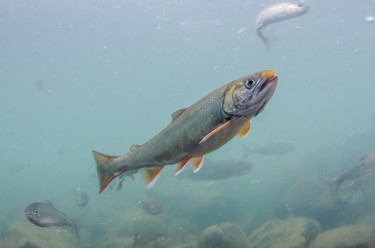
After making an exhausting migration from river to ocean and back to river—often multiple years in a row—one species of Alaskan trout decides to call it quits and retire from migrating once they are big enough to survive off their fat reserves.
This is the first time such a “retirement” pattern has been seen in fish that make this river-to-ocean migration, according to University of Washington-led research published in July in the journal Ecology.
Dolly Varden, a common and abundant trout in Southwest Alaska’s rivers, live mainly in freshwater streams, but travel to the ocean in the summer months to feed and grow. This migration pattern, called anadromy, is seen in salmon and steelhead as well as some cutthroat and bull trout. For the Dolly Varden, going to the ocean is risky yet necessary business. The sea offers a banquet feast when compared with poor food sources in their home streams, but the ocean is also a dangerous place with many predators.
The study shows that Dolly Varden, once they reach about 12 inches in length, can retire permanently from going to sea. They rely on digestive organs that can massively expand and contract and a unique relationship with sockeye salmon.
Read more at UW Today »
